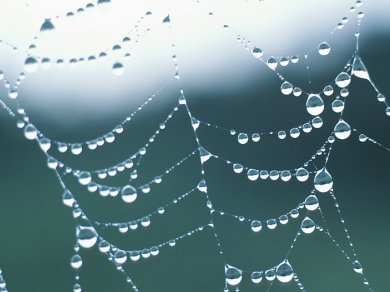Spider silk is made of fibers whose mechanical properties exceed those of steel once the smaller density of spider silk is taken into account: A spider silk fiber spun around the earth’s equator would weigh not more than 500 g.
Harald Schwalbe and co-authors, Johann Wolfgang Goethe-University, Frankfurt, Germany, highlight current research into this remarkable material.
Formed of a polypeptide chain of an AQ repeat sequence, the silk has twelve AQ sequences that are flanked by non-repetitive N- and C-terminal domains. The authors look at how the two non-repeat domains – recently solved by NMR spectroscopy – form a dimeric, highly symmetric structure. This structure ensures the solubility of the protein when stored in the spider’s lumen and contributes to the other remarkable properties of spider silk.
- The Molecular Mechanism of Spider-Silk Formation
R. Silvers, F. Buhr, H. Schwalbe,
Angew. Chem. Int. Ed. 2010, 49 (32), 5410-5412.
DOI: 10.1002/anie.201003033 - R. Silvers, F. Buhr, H. Schwalbe,
Angew. Chem. 2010, 122 (32), 5538 – 5540.
DOI: 10.1002/ange.201003033




